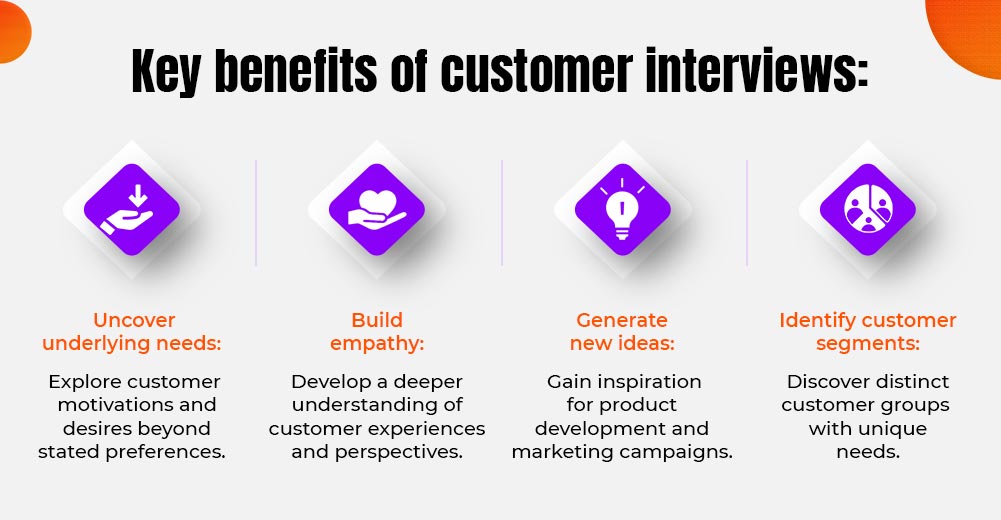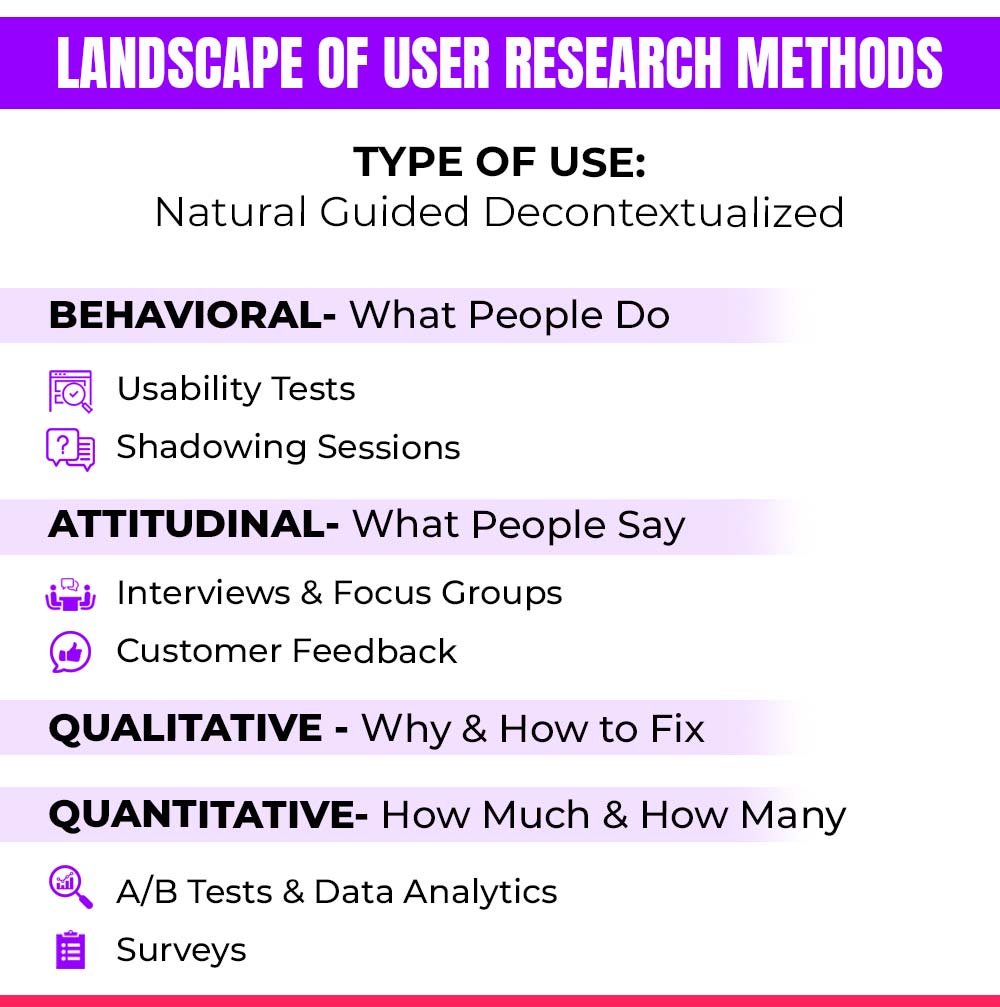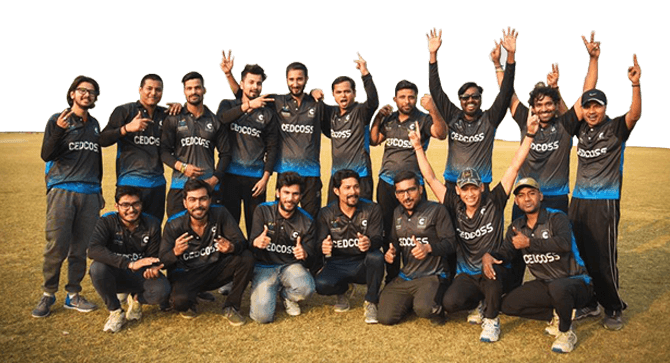Choosing the Right User Research Method
In today’s dynamic business landscape, selecting the right research method is crucial for gaining actionable insights and driving impactful results. Choosing the Right Research Method ensures that your research efforts are aligned with business goals and user needs, ultimately enhancing the effectiveness of your product experiments and user research method.


Understanding the Importance of the Right Research Method
Selecting the appropriate research method is fundamental to gathering relevant and reliable data. The right approach not only provides valuable insights into user behavior but also aligns with your business objectives, leading to more informed decisions and better outcomes.
Also Read: Unlocking the Power of Predictive Analytics with Google Analytics Data
Key Considerations for Choosing the Right Research Method
- Define Your Research Question:
- Start by clearly articulating the research question. Ensure it is specific, measurable, and aligned with your business goals.
- Identify the Type of Insight Needed:
- Behavioral Insights: Understand what users do. Methods like usability tests and shadowing sessions provide detailed insights into user actions.
- Attitudinal Insights: Learn what users say. Use interviews and focus groups to gather qualitative data about user opinions and experiences.
- Match the Method to Your Research Question:
- Choose methods that directly address your research question and objectives. For instance, use A/B testing for quantitative insights on user preferences and interviews for qualitative feedback on user experiences.
- Consider Product Stage:
- Early Stage Products: Employ methods that uncover user needs and pain points, such as exploratory research and usability testing.
- Mature Products: Focus on methods that address specific issues or validate solutions, such as A/B testing and surveys.
- Evaluate Available Resources:
- Assess your timeline, budget, and available expertise. Select methods that fit within these constraints while still providing valuable insights.
- Account for Data Accessibility:
- Be aware of data protection laws and the availability of information. Ensure that your chosen methods comply with these regulations and access the data you need.


Popular Research Methods and Their Applications
- Usability Tests:
- Ideal for observing user interactions and identifying usability issues in real-time.
- Interviews & Focus Groups:
- Useful for gathering detailed qualitative feedback and understanding user perspectives and motivations.
- A/B Testing:
- Provides quantitative data on user preferences by comparing different versions of a product or feature.
- Surveys:
- Collect both qualitative and quantitative data depending on the question type. Useful for broad feedback and statistical analysis.
- Analytics:
- Leverage tools like Google Analytics to track user behavior and performance metrics, providing insights into user actions and trends.


The Landscape of User Research Methods
Understanding the landscape of user research methods can help you select the right approach. Here’s a quick overview:
- Behavioral Methods: Observe what users do through usability tests and shadowing sessions.
- Attitudinal Methods: Learn what users say through interviews, focus groups, and customer feedback.
- Qualitative Data: Explore why and how users interact with your product. Use interviews and open-ended surveys.
Quantitative Data: Measure how much and how many. Use A/B testing and data analytics to gather numerical insights.
Let’s understand the User Research Benefits.
Applying the Right Research Method
To effectively apply the right research method:
- Align with Business Goals:
- Ensure that your chosen method addresses business objectives and contributes to achieving desired outcomes.
- Be Adaptable:
- Be prepared to adjust your approach based on preliminary findings or changing research needs.
- Integrate Insights:
- Combine insights from different methods to build a comprehensive understanding of user needs and behaviors.
Conclusion
Choosing the right research method is essential for conducting effective user research and driving meaningful product improvements. By carefully selecting methods that align with your research questions and business goals, you can gather valuable insights that lead to better decision-making and enhanced user experiences.







